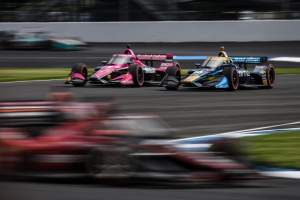until Abu Dhabi Autonomous Racing League

Across the car design itself, racing in the wet, racing on ovals and even the format of qualifying sessions, IndyCar has implemented one of its biggest raft of changes in recent years for 2023.
It could have a big impact on the safety of the drivers when the heavens open, on the competition in its blue-riband Indy 500 race and even on who takes pole on road and street courses.
With so many changes, The Race has attempted to pick them out and explain the significance of each before the season kicks off next week at St Petersburg.
The art of racing in the rain
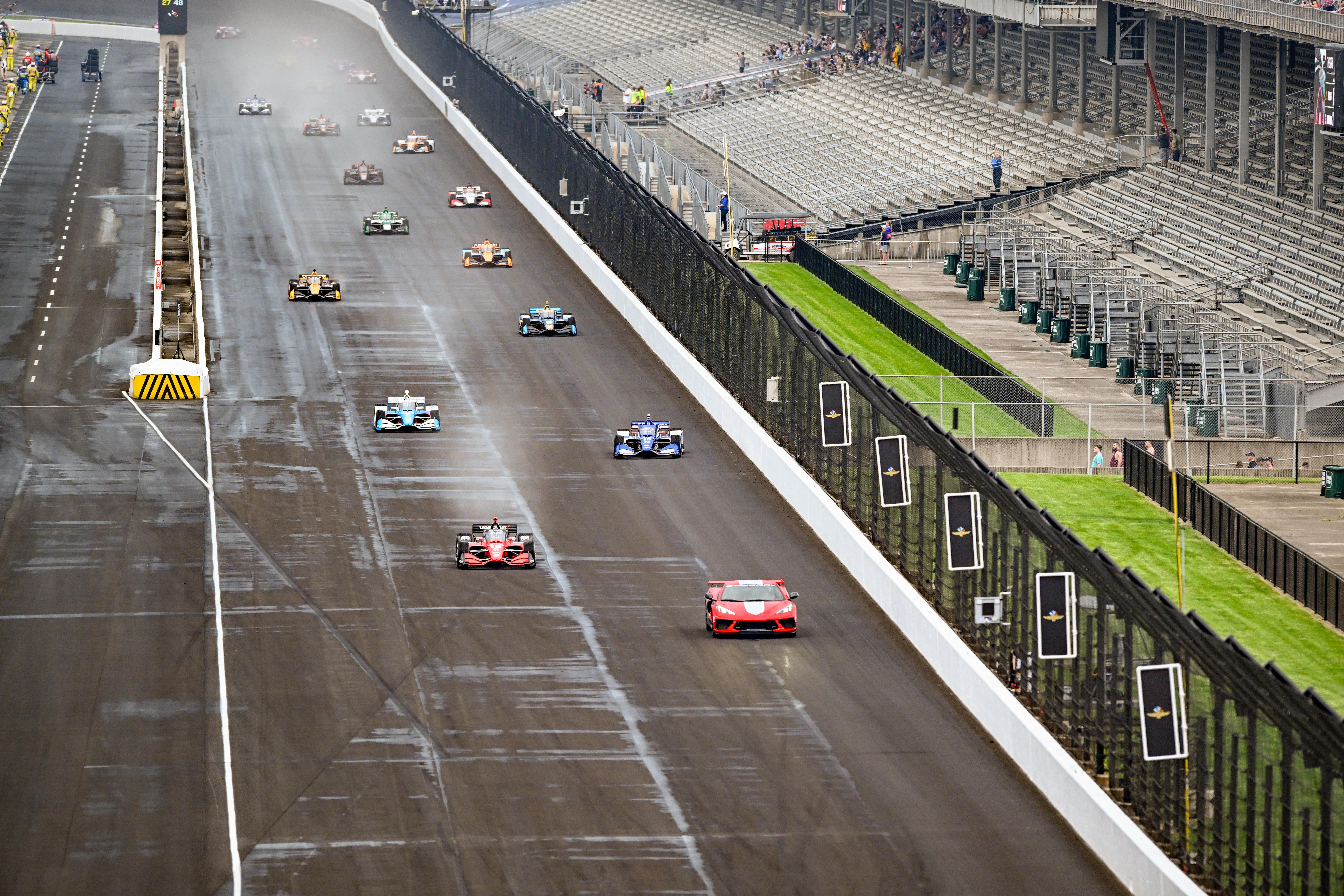
IndyCar rarely gets rain in any of its races, but it did happen with the GMR Grand Prix at the Indianapolis road course last year.
It was also the first time in two years that the new aeroscreen device got a race test in the wet, and it largely held up well for a first try, but it was clear there was room for improvement.
The problems largely arose in the closing stages when the combination of a heavy downpour and a late caution bunching up the pack caused a concertina effect. Drivers struggled to see – one even admitted to The Race crashing into the car in front and having to apologise after the race, simply because of the poor visibility. Some drivers also complained of misting issues.
IndyCar told The Race last May that it had already begun an investigation where it was envisaging upgrades, and those will be available in 2023.
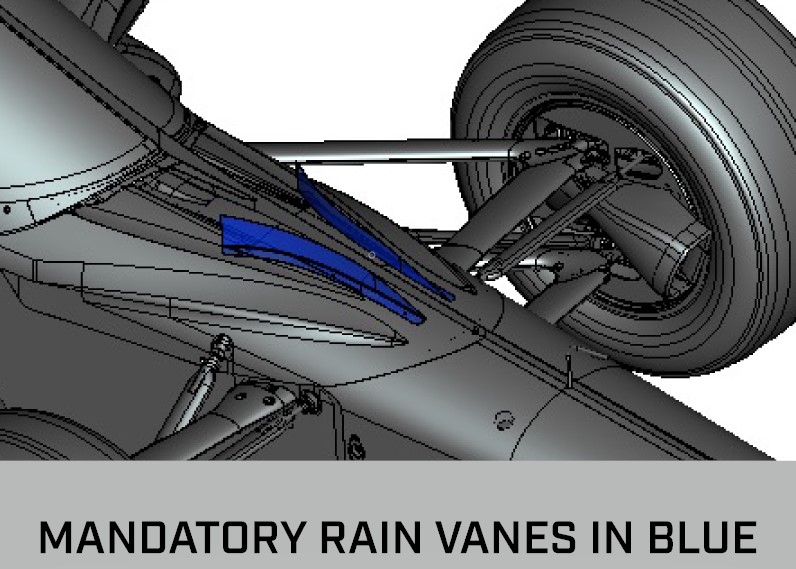
These will include small vanes on the nose of the car just in front of the aeroscreen with the aim of dispersing water.
There will also be new LED rain lights on what is a new “safety-inspired” rear wing attenuator (the station that connects the wing to the rear of the car).
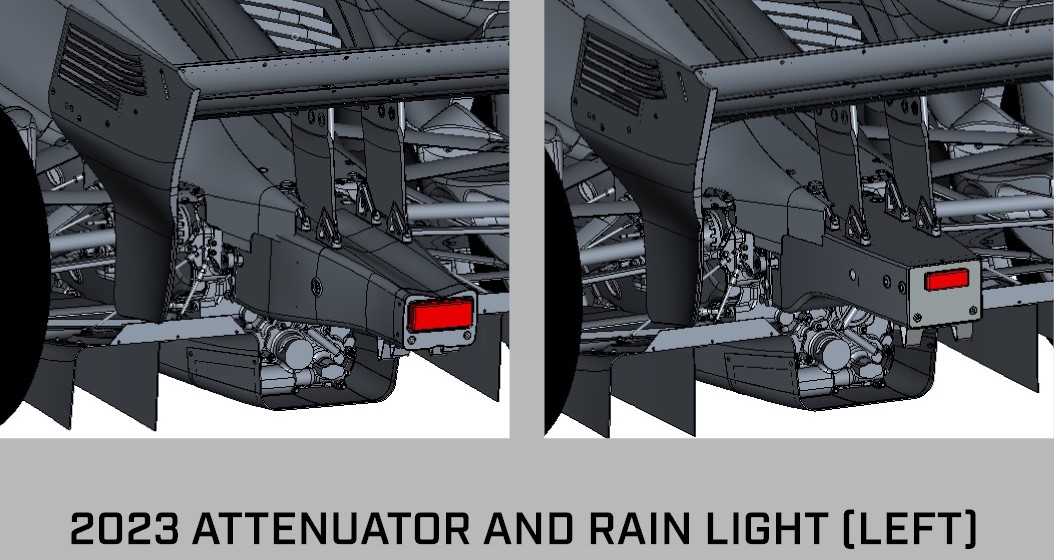
Hopefully that will allow the drivers to race better and be safer the next time IndyCar races in the wet.
Drivers’ peace of mind
The safety updates for 2023 don’t end with racing in the wet.
There’s a new steering arm to help avoid cars breaking them when colliding wheel-to-wheel, after a significant number of those incidents have ended drivers’ races, including Alex Palou and Marcus Ericsson last year at Road America and Alexander Rossi and Colton Herta at Laguna Seca in 2021.
A new wheel-tether system should help stop wheels coming loose from the car as well – always an issue, but especially on high-speed ovals – and there’s a new headrest, which has been in development for some time.
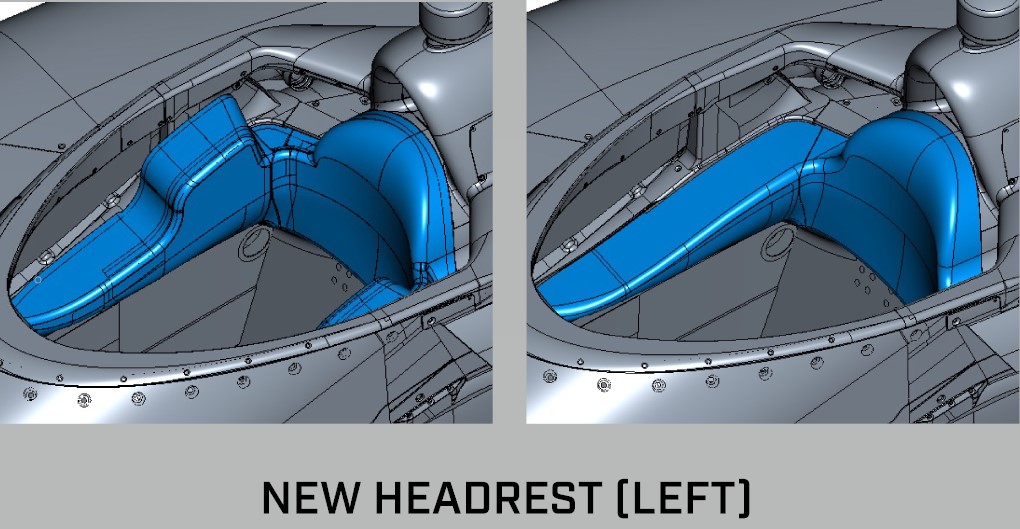
It sits higher up to give more protection and to hold drivers in place. During the aeroscreen era it appears drivers tend to move more in the cockpit and the new headrest should help keep them secure and allow the helmet and HANS safety features to do their job.
On another safety note, IndyCar has already confirmed and used a new mobile medical unit for IndyCar medical director Dr. Julia Vaizer and her team to operate from at the pre-season test.
Previously the team had used a different mobile unit and at-the-track facilities but with everything in one place, the crew can treat drivers with everything they need taken to each event.
The features include a portable x-ray machine and four treatment areas.
More aero updates
IndyCar tweaking oval bodywork has become an annual occurrence as it attempts to improve the racing it offers, especially with the heavy and high-up aeroscreen not providing the ideal characteristics for an oval. Even if the teams are finding ways to go faster each year in spite of it.
At Indy, there’s a new optional underwing flap wicker, mandatory stability wickers, an optional additional underwing inner bargeboard – which is also optional at other ovals – and the speedway infill wicker has been made optional at Indy and Texas.
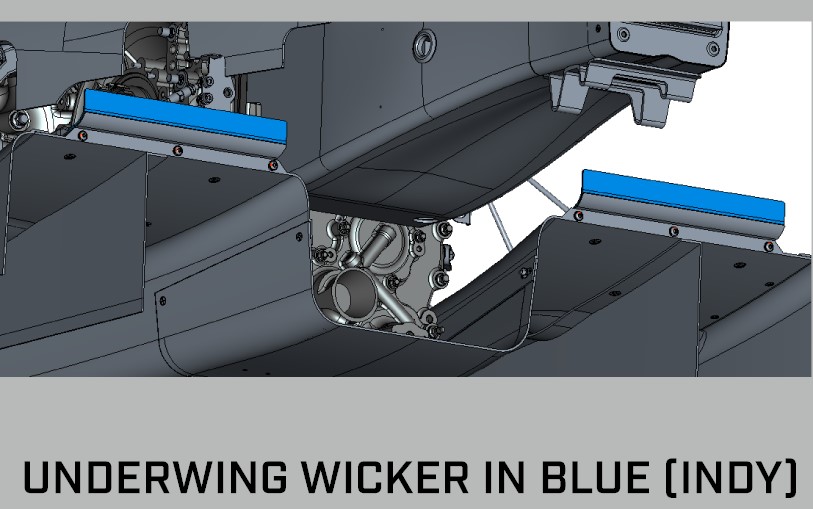
A new pillar specification will allow three degrees of additional range for the rear wing on the Indy oval.
It will increase the options for teams looking for additional or less downforce.
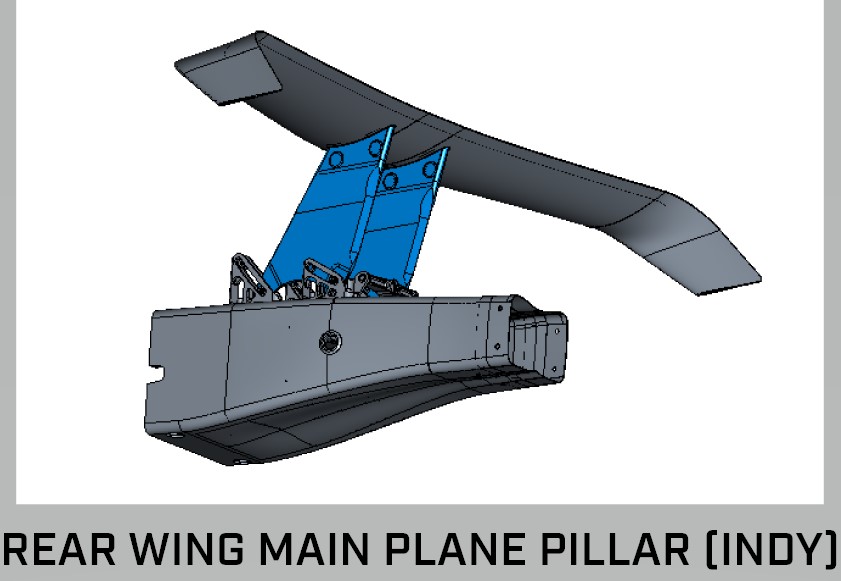
“At the Indy 500, drivers in the pack can run up to 10% more downforce than last year,” said Tino Belli, IndyCar director of aerodynamic development.
“With the increased rear wing range, teams can still try and trim out the rear wing for end-of-race speed – and go for the win – if they have worked their way up into the lead group.
“Overall, IndyCar wants to give race teams more options going into 2023. The optional bargeboards give them a crucial tool when they consider, strategically, what it will take to get to victory lane.”
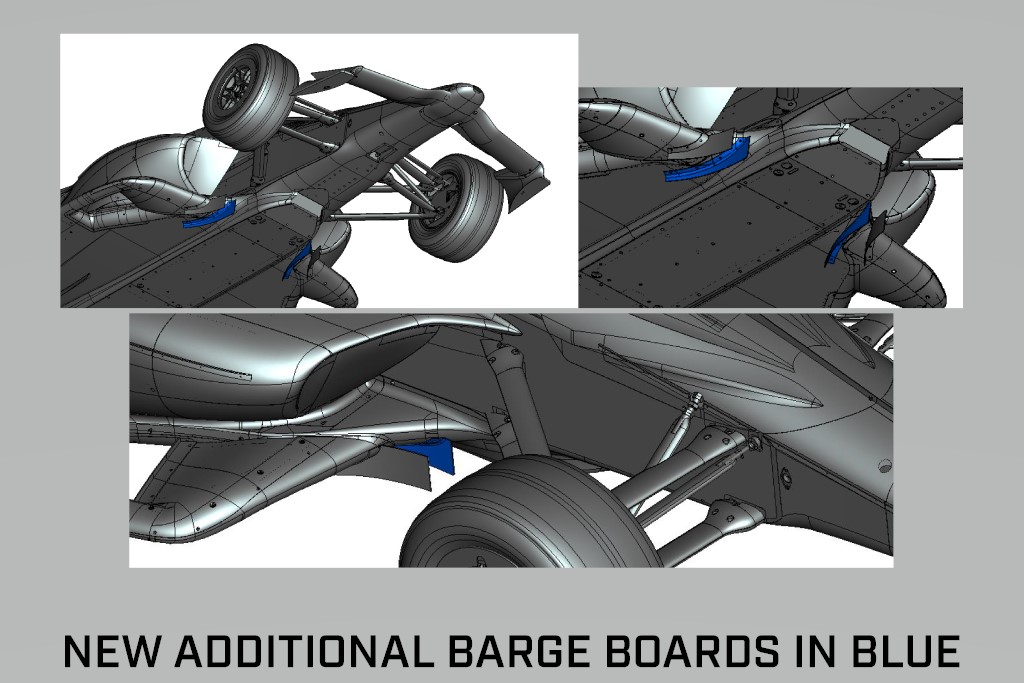
The reason these parts are optional is because all of the teams will be chasing their own philosophies with dampers, ride height, bodywork and more.
A small part may perfect the concoction or throw the balance totally out depending on how your car is poised. More options instead of mandated changes give the teams a better chance of peak performance.
Also, at Texas, the underwing sidewall has been made optional, and it will be one of the tracks alongside Gateway to have ‘second groove’ sessions – additional track time solely with the aim of adding rubber higher up the race track so that overtaking is possible and more likely with enough grip.
On the road and street courses, the short-oval bargeboards have been made available to offer more downforce.
Different tyre compounds, on an oval?!
Yes, that’s right, for the first time in IndyCar history, according to the series, the championship will offer two tyre compounds on ovals – with the Gateway race being the guinea pig.
It will follow the same rule as the road and street circuits where the additional compound must be used in the race, so there isn’t a choice in this scenario. Both tyres have to be run.
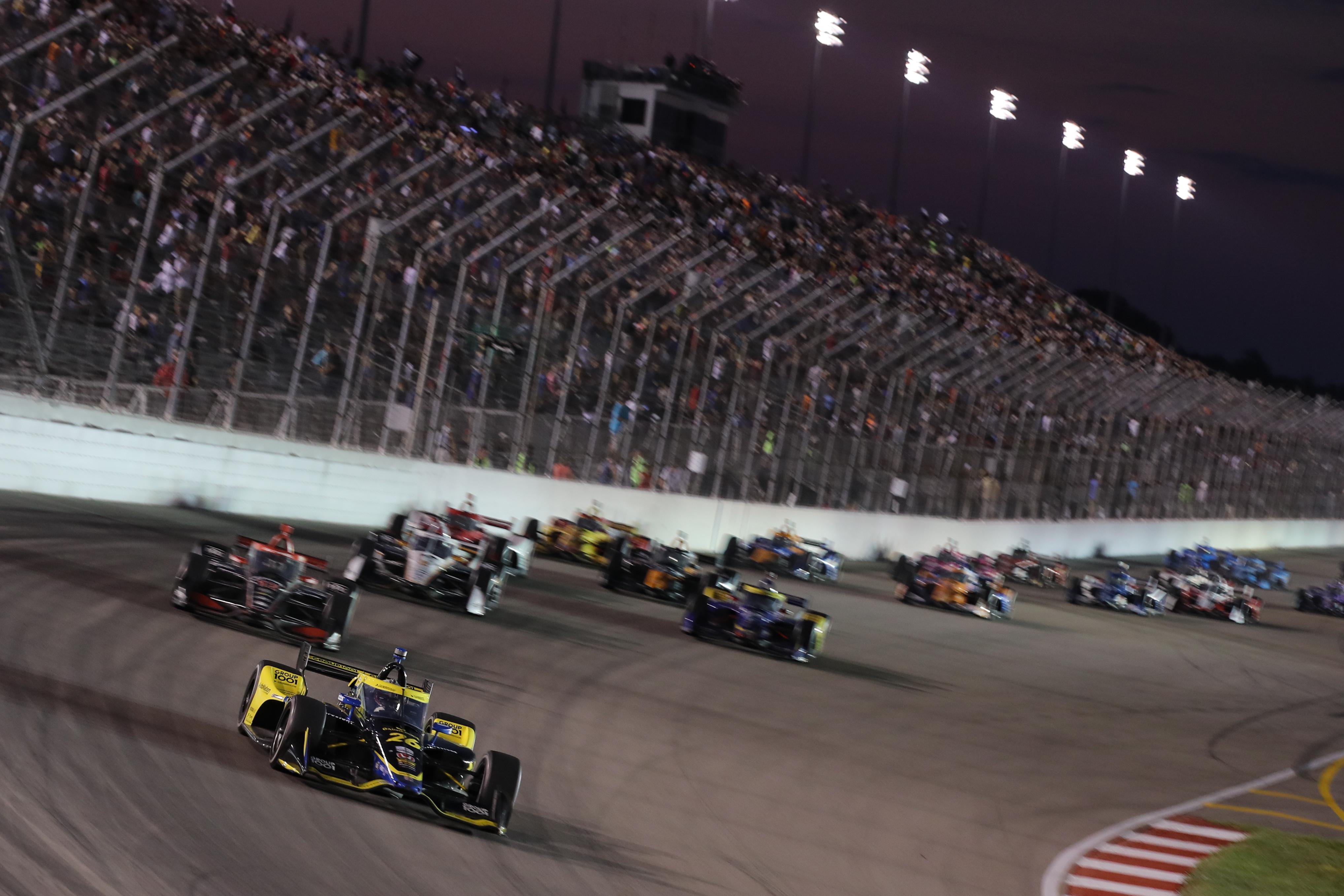
It’s a big year for IndyCar tyre supplier Firestone, as it will roll out its guayule-made alternate tyres at all five street courses. The more sustainable and lower-carbon footprint tyre made its debut as the soft compound in last year’s Nashville race. It’s part of a major sustainability push from IndyCar which includes a switch to ‘100% renewable’ Shell fuel.
Firestone is also taking on the role of tyre supplier in the Indy NXT (formerly Indy Lights) series for 2023, where there are almost 20 cars on a grid that boasted fewer than 10 as recently as 2019. It’s re-jigged the prize structure to be more driver-friendly, too.
A potential fix for a recurring complaint
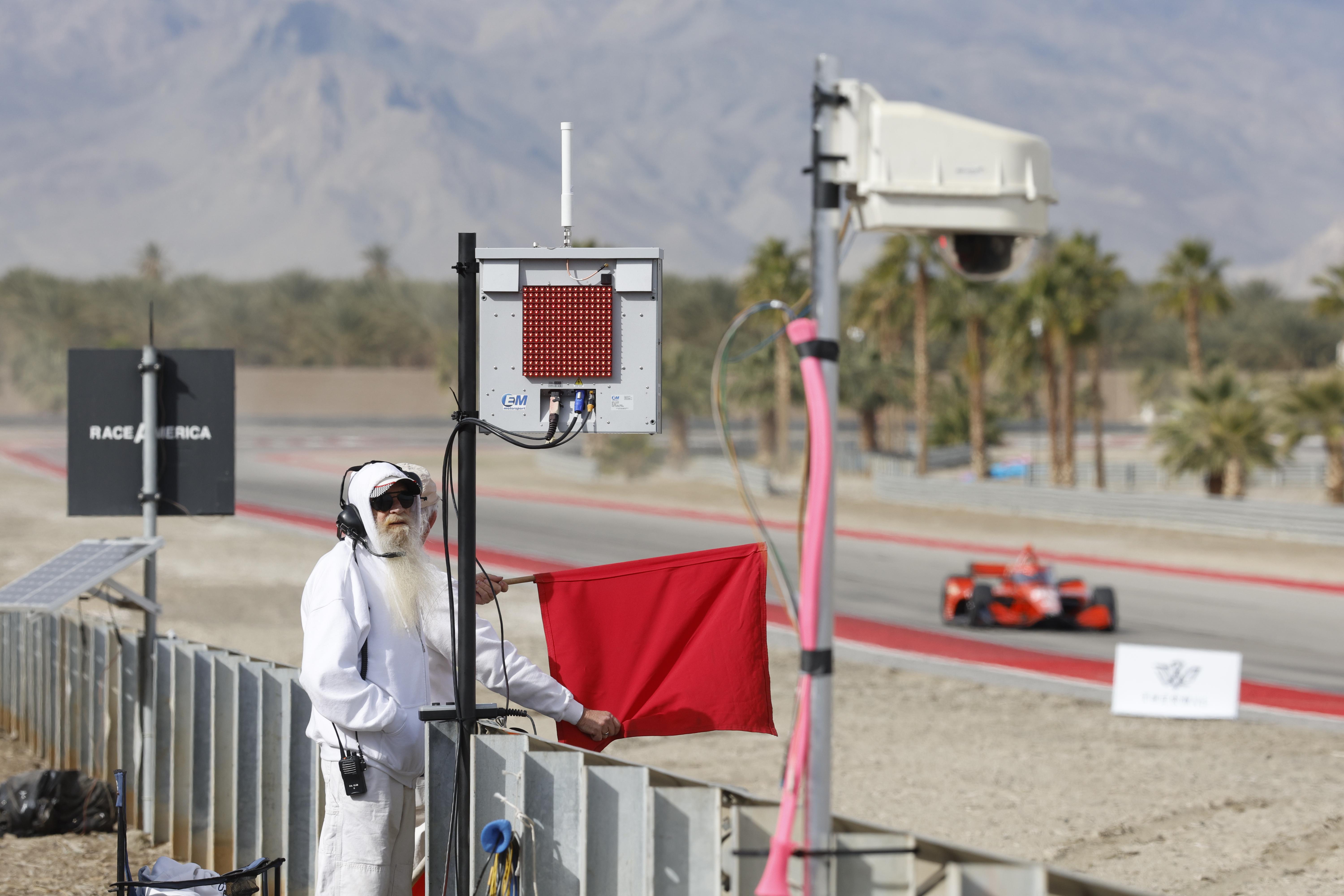
In recent years, qualifying on street courses especially but also road courses has received the ire of IndyCar drivers. If someone crashes in the short segments, it can mean drivers are caught out without having got a fast lap – or even any lap – in.
IndyCar has been tweaking its sessions in recent years and it has gone further in 2023. Now the first red flag in segment one and segment two of qualifying will pause the clock, leaving longer for drivers to get laps in later in the session. Previously the clock ran through red flags.
Another addition is that the clock for qualifying segments will not start until the first car out in the session passes the start-finish line on track. Previously the clock ran from the green flag of the session.
$1 million!

The People Ready Force for Good Challenge has been confirmed for a return in 2023. It offers $1 million to the first driver to win on an oval, road and street course respectively.
Josef Newgarden made light work of the challenge, completing it by Road America last year.
The winning driver splits the $1 million with a charity(s) of their choice and their crew. Additionally, each race winner will receive $10,000 to split in the same way.
